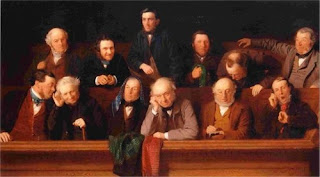 Some Recent Examples of Botched Executions:
Some Recent Examples of Botched Executions:December 7, 2000. Texas.
Claude Jones. Jones was a former intravenous drug abuser. His execution was delayed 30 minutes while the execution "team" struggled to insert an IV into a vein. He had been a longtime intravenous drug user. One member of the execution team commented, "They had to stick him about five times. They finally put it in his leg." Wrote Jim Willett, the warden of the Walls Unit and the man responsible for conducting the execution, "The medical team could not find a vein. Now I was really beginning to worry. If you can't stick a vein then a cut-down has to be performed. I have never seen one and would just as soon go through the rest of my career the same way. Just when I was really getting worried, one of the medical people hit a vein in the left leg. Inside calf to be exact. The executioner had warned me not to panic as it was going to take a while to get the fluids in the body of the inmate tonight because he was going to push the drugs through very slowly. Finally, the drug took effect and Jones took his last breath."
June 28, 2000. Missouri.
Bert Leroy HunterHunter had an unusual reaction to the lethal drugs, repeatedly coughing and gasping for air before he lapsed into unconsciousness. An attorney who witnessed the execution reported that Hunter had "violent convulsions. His head and chest jerked rapidly upward as far as the gurney restraints would allow, and then he fell quickly down upon the gurney. His body convulsed back and forth like this repeatedly. ... He suffered a violent and agonizing death."
November 7, 2001. Georgia.
Jose High.
High was pronounced dead some one hour and nine minutes after the execution began. After attempting to find a useable vein for 39 minutes, the emergency medical technicians under contract to do the execution abandoned their efforts. Eventually, one needle was stuck in High's hand, and a physician was called in to insert a second needle between his shoulder and neck.
May 2, 2006. Ohio.
Joseph L. Clark. It took 22 minutes for the execution technicians to find a vein suitable for insertion of the catheter. But three or four minutes thereafter, as the vein collapsed and Clark's arm began to swell, he raised his head off the gurney and said five times, "It don’t work. It don’t work." The curtains surrounding the gurney were then closed while the technicians worked for 30 minutes to find another vein. Media witnesses later reported that they heard "moaning, crying out and guttural noises."56 Finally, death was pronounced almost 90 minutes after the execution began. A spokeswoman for the Ohio Department of Corrections told reporters that the execution team included paramedics, but not a physician or a nurse.
December 13, 2006. Florida.
Angel Diaz.
After the first injection was administered, Mr. Diaz continued to move, and was squinting and grimacing as he tried to mouth words. A second dose was then administered, and 34 minutes passed before Mr. Diaz was declared dead. At first a spokesperson for the Florida Department of Corrections claimed that this was because Mr. Diaz had some sort of liver disease. After performing an autopsy, the Medical Examiner, Dr. William Hamilton, stated that Mr. Diaz’s liver was undamaged, but that the needle had gone through Mr. Diaz’s vein and out the other side, so the deadly chemicals were injected into soft tissue, rather than the vein. Two days after the execution, Governor Jeb Bush suspended all executions in the state and appointed a commission “to consider the humanity and constitutionality of lethal injections.”
May 24, 2007. Ohio.
Christopher Newton.
According to the Associated Press, “prison medical staff” at the Southern Ohio Correctional Facility struggled to find veins on each of Newton’s arms during the execution. Newton, who weighted 265 pounds, was declared dead almost two hours after the execution process began. The execution “team” stuck Newton at least ten times with needles before getting the shunts in place were the needles are injected.






